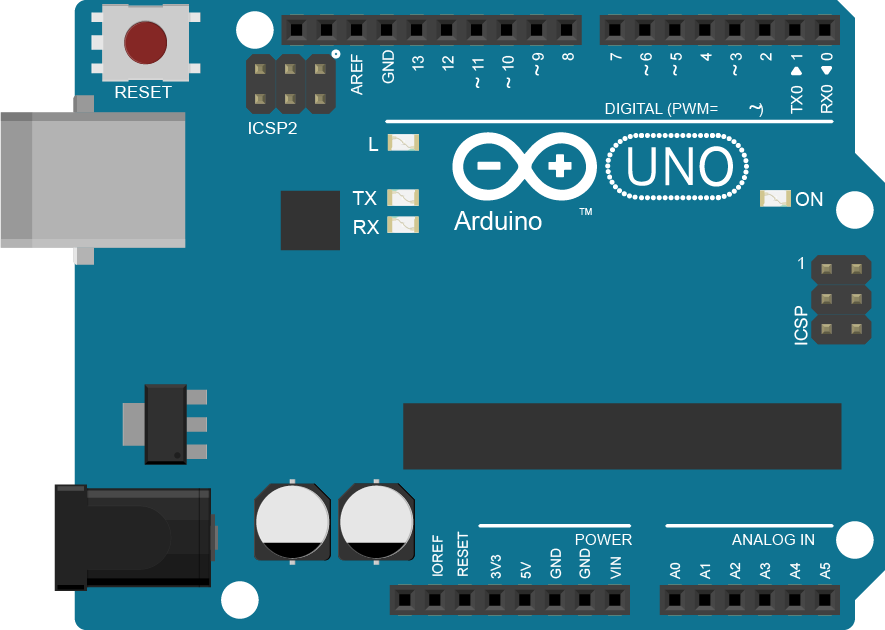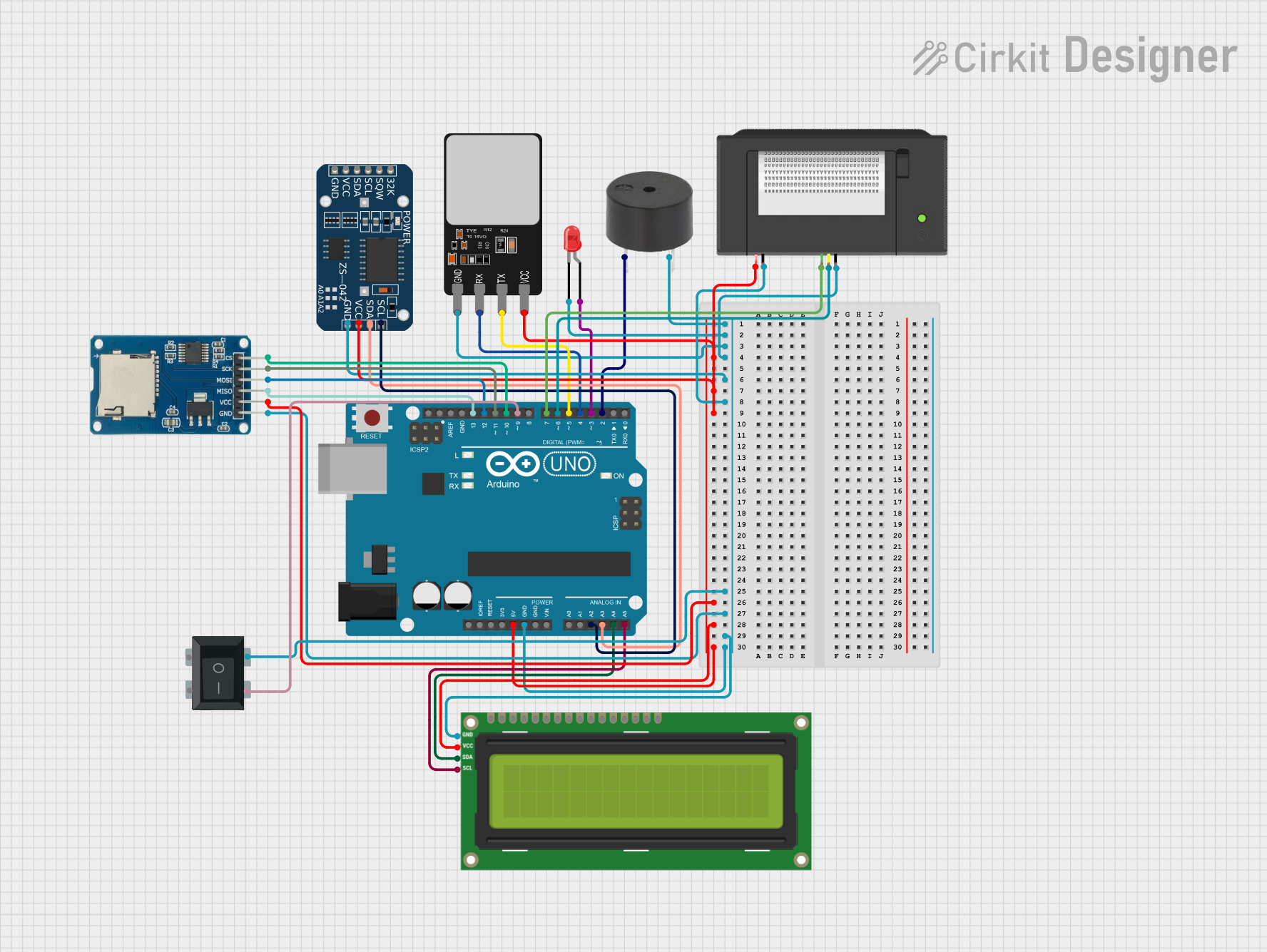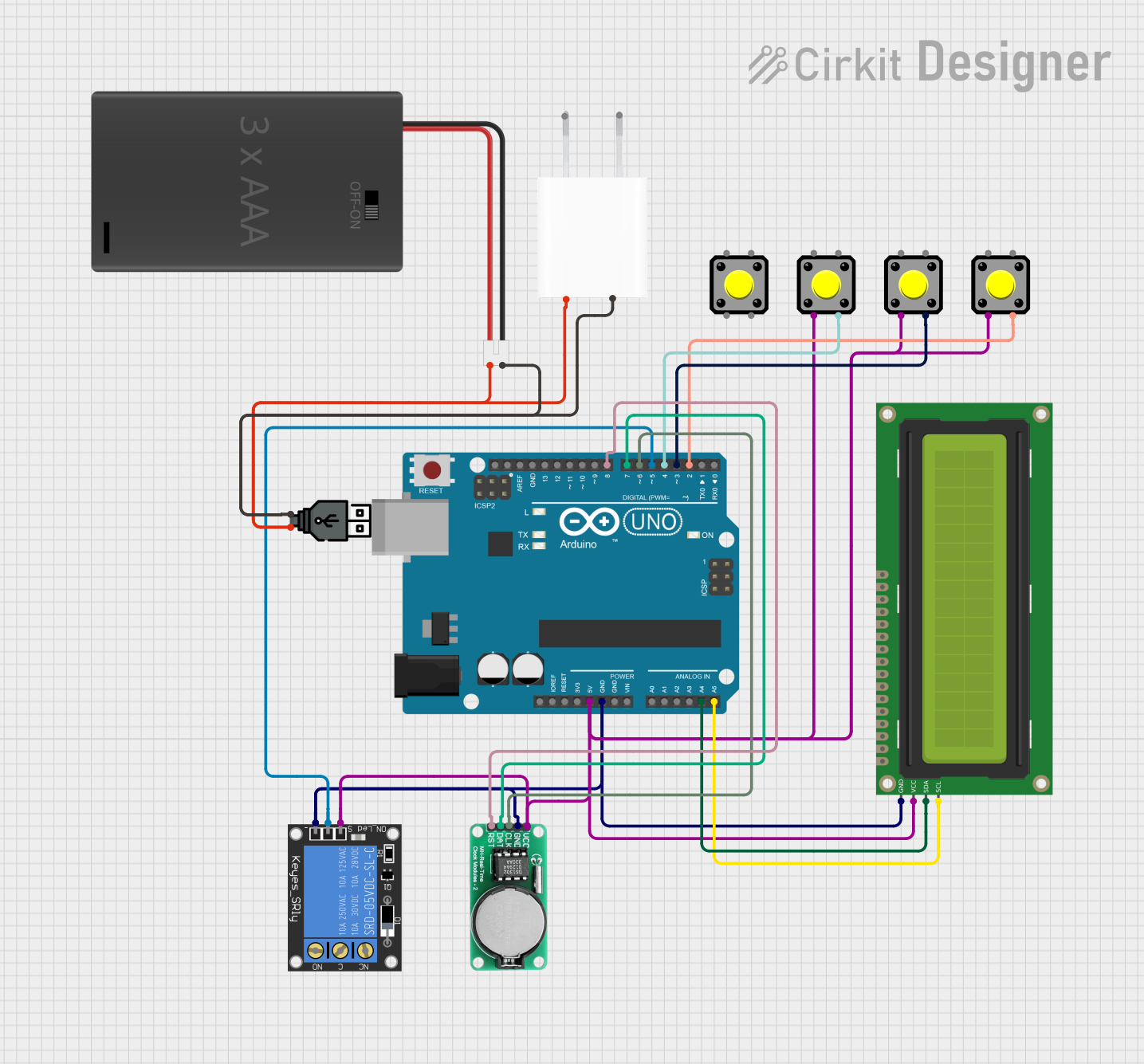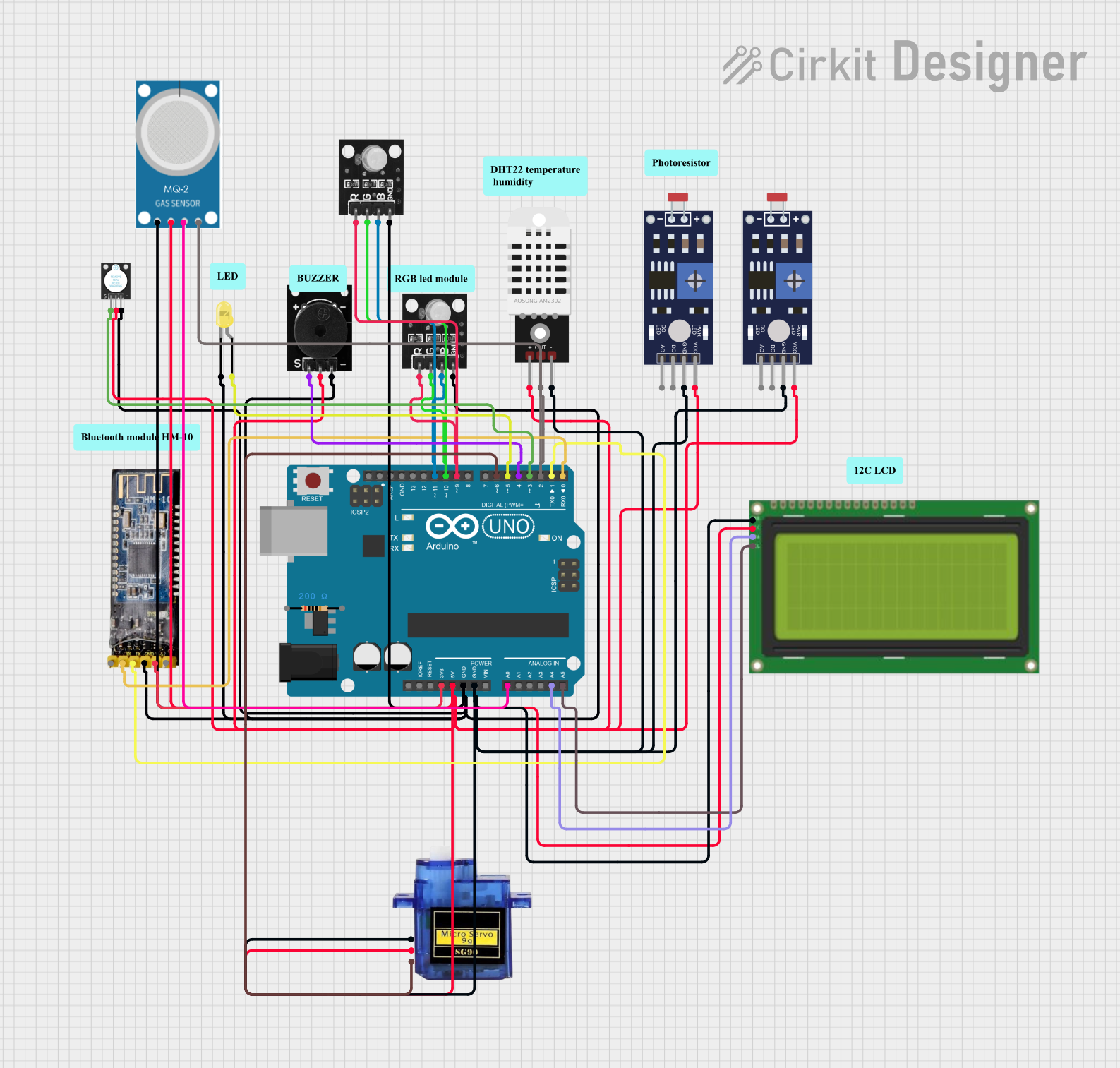
How to Use Arduino UNO: Examples, Pinouts, and Specs

 Design with Arduino UNO in Cirkit Designer
Design with Arduino UNO in Cirkit DesignerIntroduction
The Arduino UNO is a microcontroller board based on the ATmega328P. It is one of the most popular and versatile development boards in the Arduino ecosystem, widely used for building digital devices and interactive objects that can sense and control the physical world. Its ease of use, extensive community support, and compatibility with a wide range of sensors and modules make it an excellent choice for both beginners and experienced developers.
Explore Projects Built with Arduino UNO

 Open Project in Cirkit Designer
Open Project in Cirkit Designer
 Open Project in Cirkit Designer
Open Project in Cirkit Designer
 Open Project in Cirkit Designer
Open Project in Cirkit Designer
 Open Project in Cirkit Designer
Open Project in Cirkit DesignerExplore Projects Built with Arduino UNO

 Open Project in Cirkit Designer
Open Project in Cirkit Designer
 Open Project in Cirkit Designer
Open Project in Cirkit Designer
 Open Project in Cirkit Designer
Open Project in Cirkit Designer
 Open Project in Cirkit Designer
Open Project in Cirkit DesignerCommon Applications and Use Cases
- Prototyping and development of IoT devices
- Robotics and automation projects
- Data acquisition and sensor interfacing
- Home automation systems
- Educational purposes for learning programming and electronics
Technical Specifications
The Arduino UNO is designed to provide a balance of performance, simplicity, and flexibility. Below are its key technical details:
Key Technical Details
| Specification | Value |
|---|---|
| Microcontroller | ATmega328P |
| Operating Voltage | 5V |
| Input Voltage (recommended) | 7-12V |
| Input Voltage (limit) | 6-20V |
| Digital I/O Pins | 14 (6 provide PWM output) |
| Analog Input Pins | 6 |
| DC Current per I/O Pin | 20 mA |
| Flash Memory | 32 KB (0.5 KB used by bootloader) |
| SRAM | 2 KB |
| EEPROM | 1 KB |
| Clock Speed | 16 MHz |
| USB Connector | Type-B |
| Dimensions | 68.6 mm x 53.4 mm |
Pin Configuration and Descriptions
The Arduino UNO has a total of 28 pins, including digital, analog, power, and communication pins. Below is a detailed description of the pin configuration:
Digital Pins
| Pin Number | Functionality |
|---|---|
| 0 (RX) | Serial Receive (UART Communication) |
| 1 (TX) | Serial Transmit (UART Communication) |
| 2-13 | General-purpose digital I/O |
| 3, 5, 6, 9, 10, 11 | PWM output pins |
Analog Pins
| Pin Number | Functionality |
|---|---|
| A0-A5 | Analog input pins (10-bit resolution) |
Power Pins
| Pin Name | Functionality |
|---|---|
| VIN | Input voltage to the board (7-12V) |
| 5V | Regulated 5V output |
| 3.3V | Regulated 3.3V output |
| GND | Ground |
| RESET | Resets the microcontroller |
Communication Pins
| Pin Name | Functionality |
|---|---|
| SDA | I2C Data Line |
| SCL | I2C Clock Line |
| SPI Pins | MOSI, MISO, SCK (for SPI communication) |
Usage Instructions
The Arduino UNO is straightforward to use and can be programmed using the Arduino IDE. Below are the steps to get started and some best practices:
How to Use the Arduino UNO in a Circuit
- Connect the Board: Use a USB Type-B cable to connect the Arduino UNO to your computer.
- Install the Arduino IDE: Download and install the Arduino IDE from the official Arduino website.
- Select the Board and Port:
- Open the Arduino IDE.
- Go to
Tools > Boardand select "Arduino UNO." - Go to
Tools > Portand select the port to which the board is connected.
- Write and Upload Code:
- Write your program (sketch) in the Arduino IDE.
- Click the "Upload" button to upload the code to the board.
- Connect Components:
- Use jumper wires to connect sensors, actuators, or other components to the appropriate pins.
- Ensure proper power and ground connections.
Important Considerations and Best Practices
- Power Supply: Use a regulated power supply within the recommended range (7-12V) to avoid damaging the board.
- Pin Current Limits: Do not exceed 20 mA per I/O pin to prevent damage to the microcontroller.
- Avoid Short Circuits: Double-check connections to avoid short circuits, which can damage the board.
- Use Pull-up/Pull-down Resistors: For stable digital input readings, use pull-up or pull-down resistors as needed.
- Code Optimization: Optimize your code to minimize memory usage, especially for large projects.
Example Code: Blinking an LED
The following example demonstrates how to blink an LED connected to pin 13 of the Arduino UNO:
// This program blinks an LED connected to pin 13 of the Arduino UNO.
// The LED will turn on for 1 second and off for 1 second in a loop.
void setup() {
pinMode(13, OUTPUT); // Set pin 13 as an output pin
}
void loop() {
digitalWrite(13, HIGH); // Turn the LED on
delay(1000); // Wait for 1 second
digitalWrite(13, LOW); // Turn the LED off
delay(1000); // Wait for 1 second
}
Troubleshooting and FAQs
Common Issues and Solutions
Problem: The Arduino UNO is not detected by the computer.
- Solution: Ensure the USB cable is properly connected and functional. Try a different USB port or cable. Install the necessary drivers if prompted by the Arduino IDE.
Problem: The code does not upload to the board.
- Solution: Verify that the correct board and port are selected in the Arduino IDE. Check for any errors in the code and ensure the board is not in use by another program.
Problem: Components connected to the board are not working as expected.
- Solution: Double-check the wiring and connections. Ensure the components are compatible with the Arduino UNO and are receiving the correct voltage and current.
Problem: The board overheats during operation.
- Solution: Check for short circuits or excessive current draw from connected components. Use a proper heat sink or cooling mechanism if necessary.
FAQs
Q: Can the Arduino UNO be powered via USB?
- A: Yes, the Arduino UNO can be powered via the USB connection, which provides 5V to the board.
Q: How many devices can be connected to the I2C bus?
- A: The I2C bus supports multiple devices, but the total number depends on the addressable range (7-bit or 10-bit addressing) and the electrical limitations of the bus.
Q: Can the Arduino UNO be used for wireless communication?
- A: Yes, the Arduino UNO can be paired with wireless modules such as the HC-05 Bluetooth module or ESP8266 Wi-Fi module for wireless communication.
Q: Is the Arduino UNO compatible with shields?
- A: Yes, the Arduino UNO is compatible with a wide range of shields designed for various applications, such as motor control, Ethernet, and LCD displays.